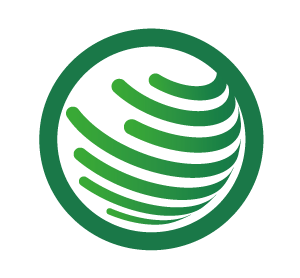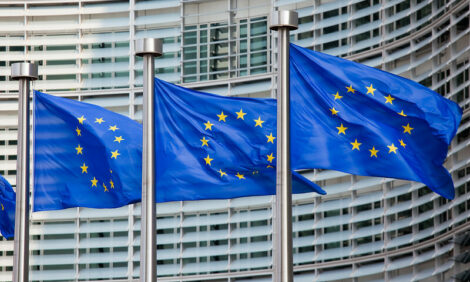



Lower food prices tame US consumer inflation in April
Consumer price index increases 0.2% in AprilUS consumer prices rebounded moderately in April as declining food costs partially offset rising rents, leading to the smallest annual increase in four years, but the inflation outlook remains unclear against the backdrop of tariffs, reported Reuters.
The rise in prices reported by the Labor Department on Tuesday was below economists' expectations and showed little impact from President Donald Trump's sweeping import duties, whose impact economists expected to become evident by the middle of this year.
The data suggested price pressures were cooling before Trump's chaotic tariffs policy and did not change economists' views that the Federal Reserve would continue to pause its interest rate-cutting cycle until late in the summer.
Though the US and China took a major step towards de-escalating their trade war over the weekend with a 90-day truce, a 10% blanket duty on almost all imports remains in place. Sectoral tariffs also continue to be levied.
"Improvements in global trade will provide some clarity on the future path of inflation," said Jeffrey Roach, chief economist at LPL Financial. "However, the uncertainty about what might happen after these temporary trade deals makes things difficult for the Fed since stagflation remains a risk. If the fog does not clear, the Fed might not be able to adjust policy in June."
The Consumer Price Index increased 0.2% last month after dipping 0.1% in March, which was the first decline since May 2020, the Labor Department's Bureau of Labor Statistics said. Economists polled by Reuters had forecast the CPI would rise 0.3%. Shelter, which includes rents, rose 0.3% and accounted for more than half of the increase in the CPI.
That jump following a 0.2% gain in March was partially offset by a g which followed a 0.4% acceleration in March. Grocery store prices decreased 0.4%, the largest decline since September 2020, pulled down by a 12.7% drop in the cost of eggs, the biggest drop since 1984.
Egg prices, which experienced sharp increases over the past year and were cited as one of the factors contributing to voter discontent during the last presidential election, surged 49.3% from a year ago. Fruit and vegetable prices fell last month as did those for cereals and bakery products.
Prices for nonalcoholic beverages, however, increased 0.7%.
Gasoline prices eased 0.1%, though consumers faced higher costs for natural gas and electricity.
In the 12 months through April, the CPI climbed 2.3%. That was the smallest gain since February 2021 and followed a 2.4% advance in March. There was little sign that tariffs, including a doubling of fentanyl-related taxes on all Chinese imports to 20% and a 25% levy on imported cars and light trucks, imposed before Trump's April 2 "Liberation Day" announcement, had boosted prices. Country-specific tariffs have been delayed until July.
Businesses boosted inventories in the first quarter ahead of the tariffs, which could account for tame price rises.
"With the economy having inventory of about 3.7 months of sales on hand, we expect the impact of tariffs on prices to begin to materialize by the middle of the year," said Conrad DeQuadros, senior economic advisor at Brean Capital.
Tariffs expected to boost prices
The Trump administration has agreed to slash duties on Chinese goods to 30% for the next 90 days. Tariffs on US goods imported into China would decline to 10% from 125%.
Nonetheless, the Budget Lab at Yale said this year's tariffs implied a 1.7% increase in consumer prices in the short-run, in the absence of policy reaction from the US central bank, the equivalent of a loss of purchasing power of $2,800 per household. Consumers' inflation expectations also have soared.
Financial markets continued to expect that the Fed would resume cutting rates in September. The central bank last week kept its benchmark overnight interest rate unchanged in the 4.25%-4.50% range.
Stocks on Wall Street traded mostly higher. The dollar slipped against a basket of currencies. US Treasury yields were slightly higher.
Excluding the volatile food and energy components, the CPI rose 0.2% last month after gaining 0.1% in March. The so-called core CPI inflation was lifted by the higher shelter costs, which reflected a 0.4% advance in owners' equivalent rent. That more than offset a 0.1% drop in the cost of hotels and motel rooms.
Prices for household furniture jumped 1.0% and prescription medication rose 0.4%. They were eclipsed by cheaper apparel, toys, games, hobbies and playground equipment as well as used cars and trucks. New motor vehicle prices were unchanged. Data from Cox Automotive's Kelley Blue Book, however, showed prices more than doubled in April.
Core goods prices edged up 0.1% after dipping 0.1% in March. There were increases in the cost of motor vehicle insurance and healthcare. But airline fares extended their slide, falling 2.8% amid declining tourist and corporate travel.
The core CPI increased 2.8% on a year-on-year basis in April, matching the rise in March. Based on the CPI data, economists estimated the core Personal Consumption Expenditures (PCE) Price Index increased 0.2% in April after being unchanged in March. That would keep the annual increase in core PCE inflation at 2.6% in April. Producer price data for April due out on Thursday could impact these estimates.
The core PCE price index is one of the inflation measures tracked by the Fed for its 2% target.
"Even with the recent agreement between the Trump administration and China to reduce the most onerous import taxes, tariffs against all US trading partners are much higher than they were at the beginning of 2025," said Gus Faucher, chief economist at PNC Financial. "Those higher tariffs will work their way into consumer goods prices over the next few months, pushing inflation back up."



